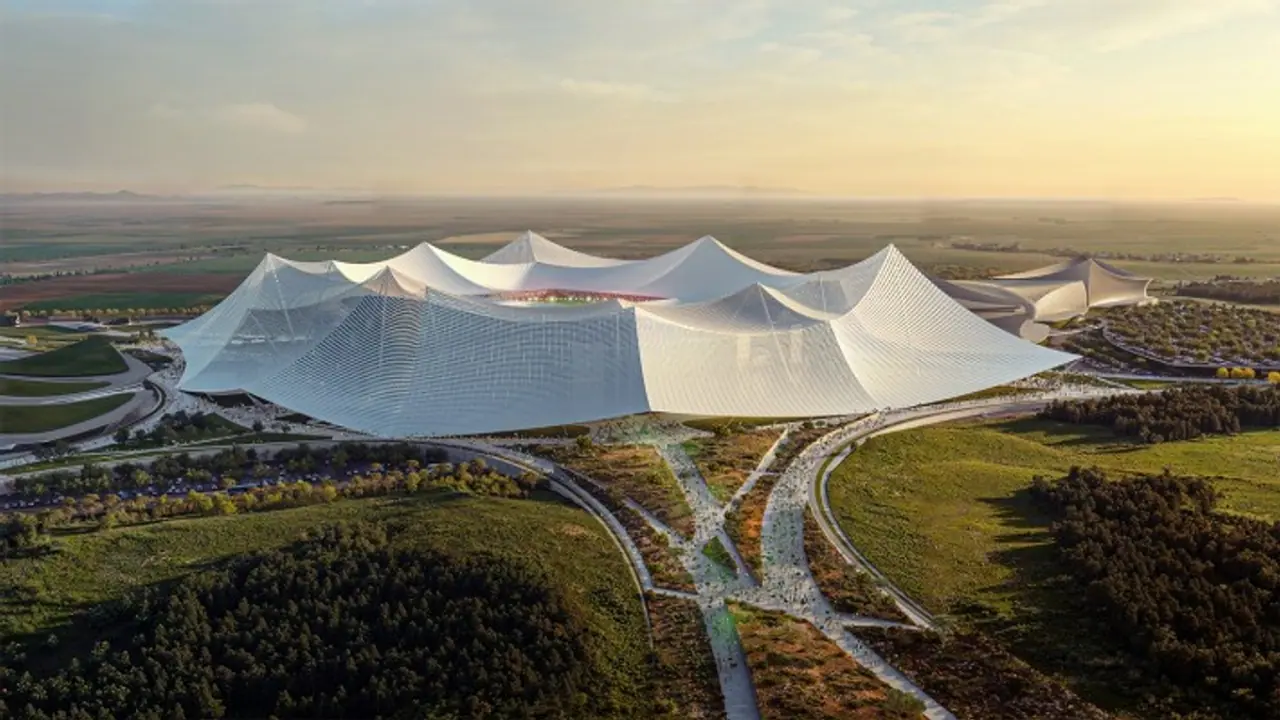The Grand Stade Hassan II is set to be a groundbreaking addition to the world of football, merging cutting-edge architecture with deep cultural roots, and offering a grand stage for future footballing legends.
In a move set to redefine the landscape of football stadiums, Morocco has unveiled ambitious plans for what will become the world's largest football venue. The Grand Stade Hassan II, poised to host the 2030 FIFA World Cup final, will feature a stunning design inspired by Moroccan culture and traditional social gatherings.

A monumental design
The architects behind the design of a new Old Trafford for Manchester United have been commissioned to create an impressive 115,000-capacity stadium, surpassing all existing football stadiums in capacity. The stadium's architectural marvel is characterized by its vast tented roof, which will rise dramatically above the desert landscape. The roof will be constructed from a distinctive aluminium lattice, creating a striking visual impact while providing shelter for spectators.
Each end of the stadium will feature three steep tiers, capable of seating 29,500 fans, creating an impressive viewing experience. The design also includes five levels of hospitality suites, which will cater to 12,000 corporate guests. A royal box will add to the grandeur of the venue, making it suitable for high-profile events and dignitaries.
Inspired by Moroccan traditions
The design of the Grand Stade Hassan II draws heavily from Moroccan traditions, specifically the country's social gatherings known as 'moussem.' The venue will reflect elements of these traditional events, integrating them into its modern architecture. The stadium will also include 32 stairways leading to gardens situated 28 meters above ground, providing elevated views and additional leisure spaces.
Architectural collaboration
The project has been brought to life by the architectural firm Populous, known for their work on major stadiums and sports venues. Populous, who were previously involved in the feasibility study for a new Old Trafford for Manchester United, collaborated with Paris-based architects Oualalou + Choi to design the Grand Stade Hassan II.
Christopher Lee, Managing Director at Populous, emphasized the significance of the project, stating, "The Grand Stade Hassan II will be a truly iconic, landmark venue for Morocco and for football itself, that will become one of the great stadia of the world."
Tarik Oualalou, Design Principal and founding partner at Oualalou + Choi, elaborated on the cultural inspirations behind the stadium. "The Grand Stade Hassan II is deeply rooted in Moroccan culture, with its traditions and contemporary expressions. It is rooted in ancient and primordial figures: the Moussem, the tent, and the garden, as well as the topography and landscapes of Morocco. It's a generous space, open to the world and respectful to the Nature it protects. The Grand Stade Hassan II de Casablanca is the embodiment of the great tradition of Moroccan hospitality."
Construction and future prospects
Construction of the Grand Stade Hassan II is set to begin on a 100-hectare site to the north of Casablanca. The project has received public financing approval, and work is expected to commence in the near future. In addition to hosting World Cup matches, the stadium will serve as the home ground for two local football clubs.
As Morocco prepares to co-host the 2030 World Cup with Spain and Portugal, the Grand Stade Hassan II is anticipated to play a pivotal role in the tournament. The venue's blend of modern design and cultural heritage aims to create a world-class stadium that reflects Morocco's rich traditions while meeting the demands of global football.
The Grand Stade Hassan II's impressive design and capacity may also influence future stadium projects elsewhere. Populous could potentially be involved in creating a new home for Manchester United, should the club secure the necessary funding. Alternatively, award-winning Mancunian architect Sir Norman Foster could be commissioned for the task.
